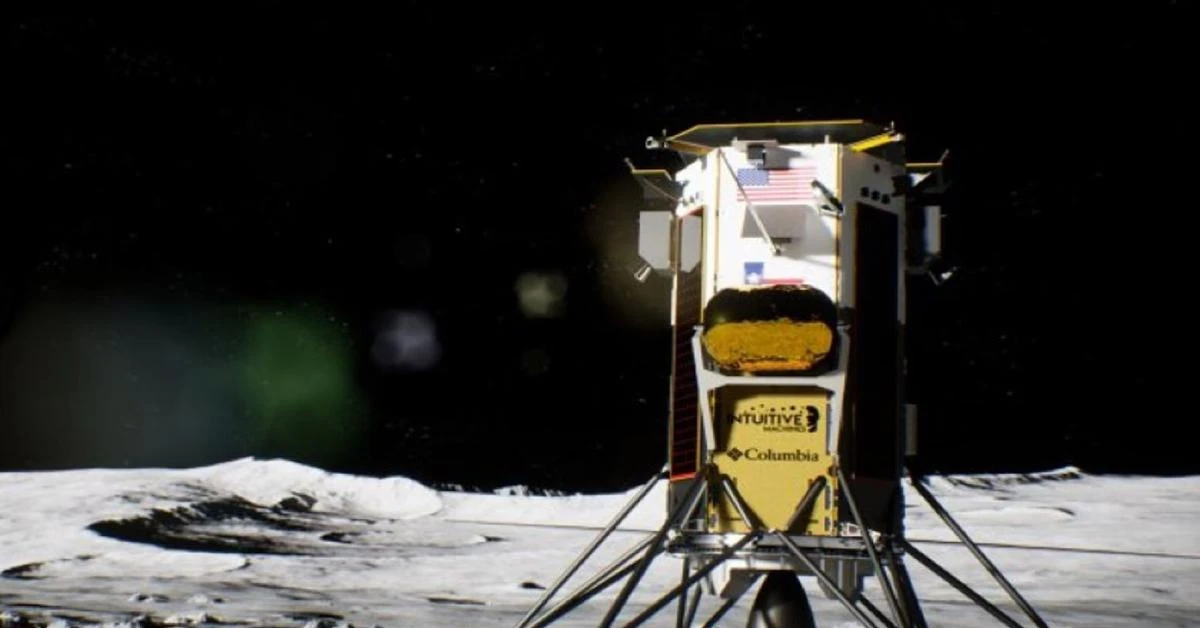Private US firm to lead lunar touchdown mission

Houston-based Intuitive Machines is leading the “IM-1” mission to achieve the first nongovernmental lunar touchdown and deploy the first U.S. robotic probe on the lunar surface in over 50 years
A U.S.-based spacecraft is scheduled to launch early Thursday in an attempt to land on the Moon, marking the second private-led endeavor of the year following a previous unsuccessful mission.
Intuitive Machines, a company based in Houston, is spearheading the “IM-1” mission with the goal of achieving the first nongovernmental lunar touchdown and deploying the first U.S. robotic probe on the lunar surface since the Apollo missions over 50 years ago.
The hexagonal Nova-C lander, named “Odysseus,” is slated to lift off atop a SpaceX Falcon 9 rocket from the Kennedy Space Center in Florida at 1:05 a.m. Thursday local time (6:05 a.m. GMT).
Originally planned for Wednesday, the launch was postponed due to abnormal temperatures discovered by SpaceX during the lander’s fueling process.
Equipped with a new supercooled liquid methane and oxygen engine, the lander has the capability to swiftly reach its destination, minimizing exposure to the high radiation environment around the Earth known as the Van Allen belt.
Trent Martin of Intuitive Machines emphasized the significance of the mission, stating that “the opportunity to return the United States to the Moon for the first time since 1972 is a remarkable engineering achievement driven by a deep desire to explore.”
Despite the delay, the spacecraft is still expected to reach its landing site, Malapert A, on February 22, located 300 kilometers (180 miles) from the south pole in an impact crater.
NASA’s long-term objective is to establish a presence on the Moon and extract ice for drinking water and rocket fuel as part of its Artemis program, aimed at paving the way for human exploration of Mars.
Intuitive Machines received $118 million from NASA to transport scientific equipment designed to study and mitigate environmental hazards for astronauts, with the first planned human landing not anticipated before 2026.
In addition to scientific hardware, the spacecraft is carrying a digital archive of human knowledge and 125 miniature sculptures of the Moon created by artist Jeff Koons.
Following the landing, the payloads are projected to operate for approximately seven days before the lunar night falls over the south pole, rendering the Odysseus lander inoperable.
The IM-1 mission is the second initiative under NASA’s Commercial Lunar Payload Services (CLPS) program, which aims to outsource transportation services to the private sector to achieve cost savings and stimulate lunar economic activities.
The first mission, conducted by Astrobotic based in Pittsburgh, encountered an engine anomaly causing a fuel leak, leading to the spacecraft’s return and eventual re-entry into Earth’s atmosphere.
Soft landing a robotic probe on the Moon is a complex task, involving navigation through challenging terrain with a communication delay of several seconds with Earth, and the use of thrusters for a controlled descent in the absence of an atmosphere that would support parachutes.
In addition to Astrobotic’s unsuccessful attempt, two other private initiatives came close to lunar landings: Beresheet, operated by an Israeli nonprofit, crash-landed in 2019, while the Japanese company ispace also experienced a “hard landing” last year.
Source: AFP



